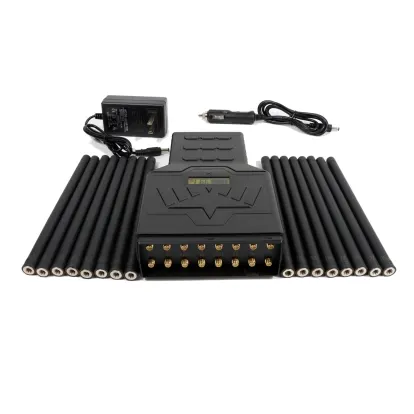| En poursuivant votre navigation sur ce site, vous acceptez l'utilisation de cookies pour vous proposer des services et offres adaptés à vos centres d'intérêt. En savoir plus et gérer ces paramètres. |  |
Blog de precisejammers
aide blog-

Factors that interfere with the reception of Wi-Fi signals publié le 20/12/2023 à 04:04
A WiFi and bluetooth jammer Can Prevent Data Theft
It is important to understand that WiFi is available in 2 frequencies, 2.4GHz and 5GHz. While 2.4GHz is by far the most commonly used, some newer routers do include 5GHz.
Bluetooth is within the 2.4GHz band, so any WiFi jammer that covers 2.4GHz is also going to block Bluetooth.
The next important consideration is the size of the coverage area needed for your application. We offer units such as which covers both 2.4GHz and 5GHz to approximately 15 meters, the popular spy camera jammer which covers 2.4GHz WiFi only to approximately 20 meters, or the extremely powerful which covers both, up to 250 meters.
There are some variations in the coverage area depending upon local signal strength, physical environment, etc. Where the signal is weaker, the coverage is greater, and vice versa.
How Far Should WiFi Reach?
Variations in the WiFi signal range can occur due to factors like the frequency range, signal strength, and the number of walls or obstacles that obstruct the signal between your jamming device and the router.
For your devices, the 2.4 GHz frequency band ensures broader coverage, albeit at a slower speed. In contrast, the 5 GHz frequency band offers faster speeds but has a narrower range, enabling your network to perform at its best.
Typically, a typical WiFi router has a coverage range of around 100 feet indoors and up to 300 feet outdoors in open spaces. However, the presence of other devices or materials can cause interference, resulting in a significant decrease in this range.
Signal Disturbances and Interference
The WiFi signal serves as the bridge connecting your devices to the internet, utilizing a frequency range (2.4GHz or 5GHz) that propagates through the air. Opting for newer equipment that supports the 5 GHz frequency band is advantageous due to the shorter range of signals in this band, reducing the likelihood of interference from other networks compared to older equipment operating on the 2.4 GHz band.
Metal
The material that poses the most significant obstacle to your WiFi signal is metal. With its exceptional electrical conductivity, metal can reflect WiFi signals, leading to buffering problems during streaming or videoconferencing, delays in gaming, and frustratingly slow loading times.
Walls (Concrete & Brick)
The capacity of walls to hinder WiFi signals is determined by multiple factors, including the composition and thickness of the wall material.
When it comes to WiFi signal penetration, concrete and brick walls present a challenge. However, concrete walls are more proficient at blocking WiFi signals than brick walls due to their higher density and thicker mass.
Windows, Glass & Mirrors
It’s generally not recommended to place your router next to a window or a mirror, either. WiFi signals can’t pass through windows, glass, and mirrors because these materials contain a thin layer of metal that reflects the radio waves back instead of allowing them to pass through.
(0) commentairestags :wifi
ARCHIVES

"Jean-Michel Berille, le responsable des télé-conseillers." |

- Méthode Savoir Maigrir |
|
ACCUEIL
COACHING
|
PREMIUM
FORUM PREMIUM
|
COMMUNAUTÉ
FORUM
|
RUBRIQUES
DOSSIERS
|
GUIDES
PLUS
|
|
||||||
|
|
|
|||||
|
|
||||||
|
|
||||||
|
|
|
|||||
|
|
||||||
|
|
Tags : ventre plat | maigrir des fesses | abdominaux | régime américain | régime mayo | régime protéiné | maigrir du ventre | |
|
|
|
Découvrez aussi : exercices abdominaux | recette wok | |
|
|
|
|
|
ANXA Partenaires : Recette de cuisine | Recette cuisine | |
|



